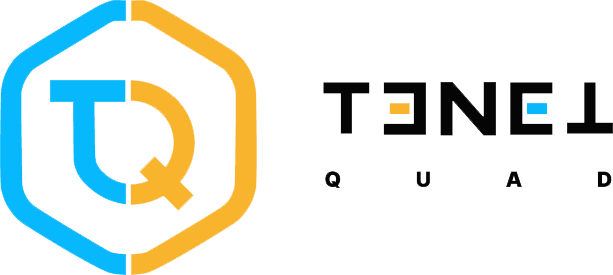How to Create a Proof of Concept: Practical Guide to Software Development
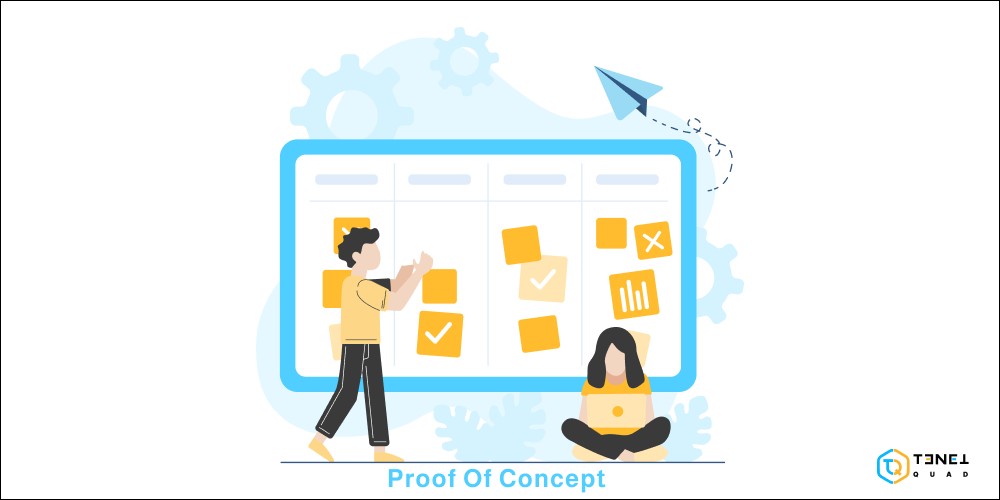
A proof of concept is an important step in software development. This guide explains what it is and how to create one.
Every software project starts with an idea—some good, some not so good. If all ideas were great, there’d be no need for a proof of concept!
These ideas need to be tested and confirmed during software development. This process is called creating a proof of concept.
A proof of concept is a simple prototype that helps developers test if an idea works and confirm their assumptions.
A proof of concept helps check if a solution is technically possible. It’s not a full product and isn’t meant for real use. Creating one is the first step in software development and is important for any project.
A proof of concept is an important step in software development. A clear guide helps you test your ideas early, saving time and money. It also helps you avoid problems later!

This blog post will explain the key parts of a proof of concept and how to create one successfully.
What is Proof of Concept? (POC)
A Proof of Concept (POC) is a test to see if an idea, technology, or plan will work in real life. It helps decide if something is worth investing time and resources in before going further.
POCs are usually small and short-term. They help answer specific questions or solve problems. Since technology and strategies keep evolving, businesses need to make sure they’re using the best and latest solutions.
Many industries use POCs when developing products, such as:
- Project Management
- Software Development
- Business Development
A POC isn’t always needed, but it can be helpful in many cases. For example, if you’re considering a new software system, a POC can help you test if it works well and meets your needs.
If you’re considering a new marketing strategy, a POC can help you see if it’s likely to work.
Benefits of Creating a POC
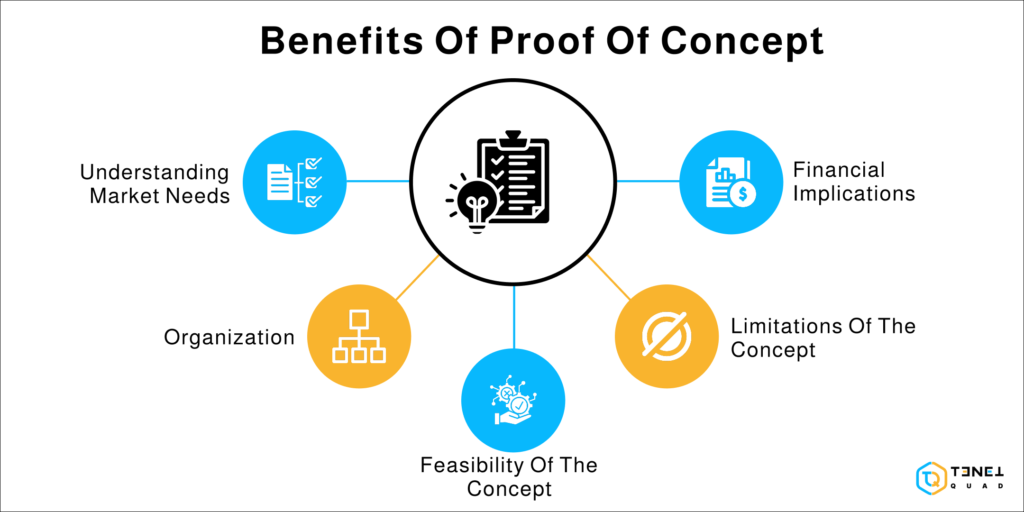
Creating a Proof of Concept (POC) has many benefits. It helps confirm if an idea works, test a theory, and check if a plan is possible. A POC also helps find risks and challenges early in the process.
A proof of concept shows that a project idea is possible. It also tests if the proposed technical solution will work.
A proof of concept should be simple and small, not a full working system. It helps developers save time and money in the long run.
A proof of concept helps show if a project or product is possible. It also helps investors and decision-makers see its value.
Let’s explore more benefits of creating a POC.
Understanding Market Needs
Creating a proof of concept can feel overwhelming, but it’s important to understand market needs before starting. The first step is knowing your audience. Once you identify your target market, you can learn what they need.
You can do this through:
- Market research
- Surveys
- Interviews
- Focus groups
Once you understand market needs, you can create a POC that meets them. A clear guide will help you build a successful final product.
Organization
Creating a proof of concept can be challenging, but breaking it into smaller steps makes it easier.
Start by listing the tasks you need to complete, then break them down into simple steps. For each task, decide what needs to be done.
For example, if you’re building new software, first identify the requirements. Once you know them, you can start designing the program.
Follow your plan and complete one task at a time, checking them off as you go. This keeps you organized and motivated.
If you get stuck, don’t be afraid to ask for help. Many resources are available for software developers, so you don’t have to do it alone. With good planning and support, you can create a POC that will be useful for years to come.
Feasibility of the Concept
A feasibility study examines a plan or project to see if it is likely to succeed. It helps determine if the project is possible and worth pursuing.
This study also identifies potential problems or risks that could affect success. Doing a feasibility study before starting a project increases the chances of success.
Limitations of the Concept
A proof of concept helps test new ideas or ways to solve a problem. While it’s a useful tool in software development, it doesn’t guarantee the final product’s success. Instead, it serves as a starting point for further development.
Financial Implications
Creating a proof of concept can cost money, including expenses for software, hardware, and services. The time spent developing it also adds to the cost.
Proof of Concert vs. Prototype

A proof of concept (POC) is a small test to see if an idea can work as a real product. A prototype is an early version of that product.
A POC is usually cheaper and quicker because it’s just a basic test or simulation. Its goal is to check if the idea is technically possible and if it could be successful in the market. If a POC works, it can lead to a prototype or even a full product.
A prototype is a more advanced and functional version of the product. It helps test all features and fix design issues before full production.
Usually, a prototype is made after a successful POC to further develop and improve the idea.
Proof of Concert vs. MVP
When starting a new software project, it’s important to create a prototype or “minimum viable product” (MVP) to test if the idea works. The MVP should focus on the software’s main features and be quick and easy to launch.
Keeping it simple makes testing and improving easier. The goal is to show that the software is possible and highlight its key functions. Only include essential features to avoid unnecessary complexity.
A helpful way to prioritize features is the MoSCoW method:
M (Must Have) o S (Should Have) C (Could Have) o W (Won’t Have)
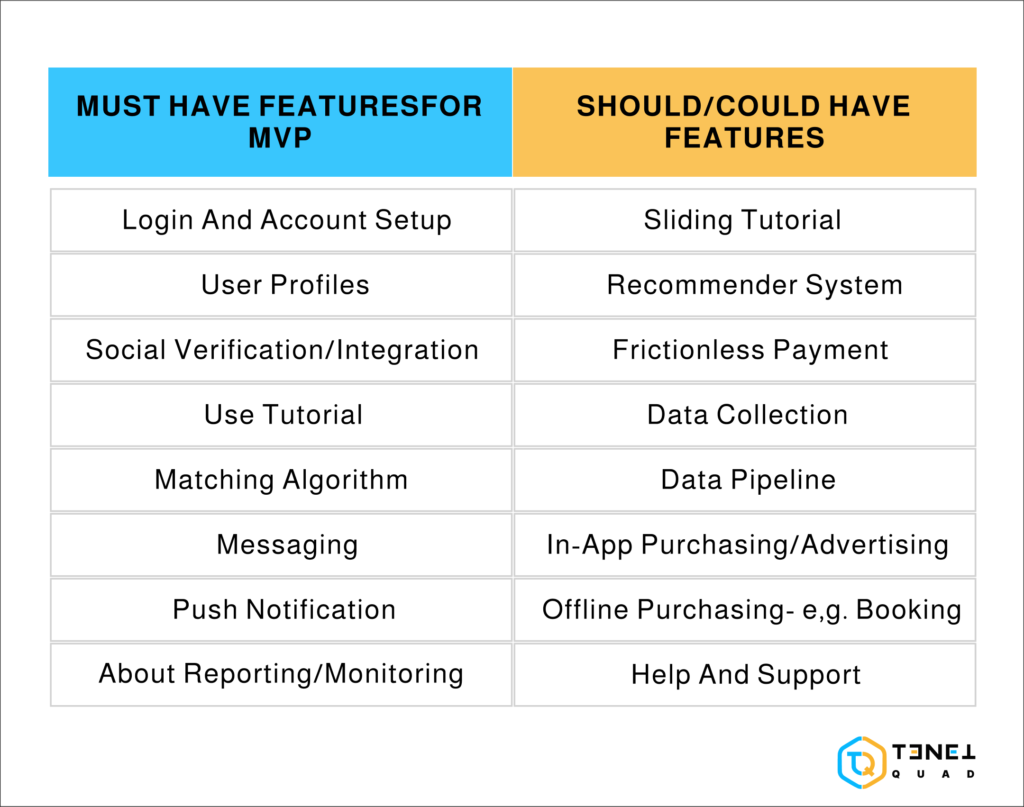
Assign each feature to a category based on its importance. This helps prioritize what to develop first. For example, you might plan to make money from your product later, but not in the first version.
Once the MVP is ready, it can be used as a proof of concept to attract investors and start the project. Both POCs and MVPs help test if an idea has potential.
However, a proof of concept focuses on whether the idea is technically possible, while an MVP tests if it can succeed in the market.
Proof of Concept vs. Pilot
A POC is created to check if a technology, design, product, or feature is possible and worth pursuing.
A pilot is a small-scale test of a system or policy to see if it works in real life. It helps gather information about its effectiveness and any issues that arise. To be useful, pilots must be carefully planned and monitored.
POCs and pilots are different:
- POCs test if an idea is technically possible.
- Pilots test if a system works in practice.
Piloting a software project has both pros and cons. One big advantage is that it helps find problems early, reducing risks. This allows the team to fix issues before they become major.
Another benefit is getting useful feedback from users, which helps improve the final product.
Piloting has some downsides—it can be costly and take a lot of time. It’s also hard to fully recreate the final user environment during a pilot. Plus, if the pilot fails, the team might have to start over.
A proof of concept (POC) is a way to show investors that an idea has potential. A pilot, on the other hand, is a small-scale test to see if a project or system actually works.
In software development:
- A POC proves the idea is possible.
- A pilot tests if the development process works.
A POC focuses on feasibility, while a pilot checks effectiveness.
Steps to Create a Proof of Concept
A Proof of Concept (POC) is a small test to show that an idea or theory can work in real life, usually in a controlled setting, before turning it into a full business or technology solution.
Dos and Don’ts
When creating a Proof of Concept (POC), following the right steps can help ensure success. Here are some important things to keep in mind:
DO:
- Keep it simple. Focus on a small, clear goal that can be completed quickly.
- Involve key people. Make sure those who will use or review the POC are part of the process.
- Set success criteria. Define what success looks like so you can measure if the POC works.
DON’T:
- Make it too complex. A POC is just a basic test, not a full product.
- Work alone. Get key people involved early to gain support and improve results.
- Keep it uncl
Example :
Pixar:
Pixar sometimes makes short films to try out new animation techniques. If the test works well and the animators are happy, they use those techniques in their movies. For example, they created Geri’s Game to test human facial animation, which later helped them make Toy Story and other films with human characters.
Airbnb:
Airbnb lets people share hosting duties. One person rents out a place, while another manages it. They tested this idea in Tokyo by having a team manually match owners with co-hosts.
This test helped them create the right computer system for co-hosting. At first, people handled everything, making changes as needed before turning it into an app feature.
Gaming Apps:
Many mobile gaming companies have similar games. This happens for two reasons:
- Mobile games make a lot of money.
- Companies can test new features in one game before adding them to others.
For example, Machine Zone (which made $1.1 billion) used Game of War to test features for Mobile Strike. They first tried better bots to stop harassment and ran tests to find fake accounts in Game of War before using them in Mobile Strike.
Now, let’s take a closer look at the steps to create a POC.
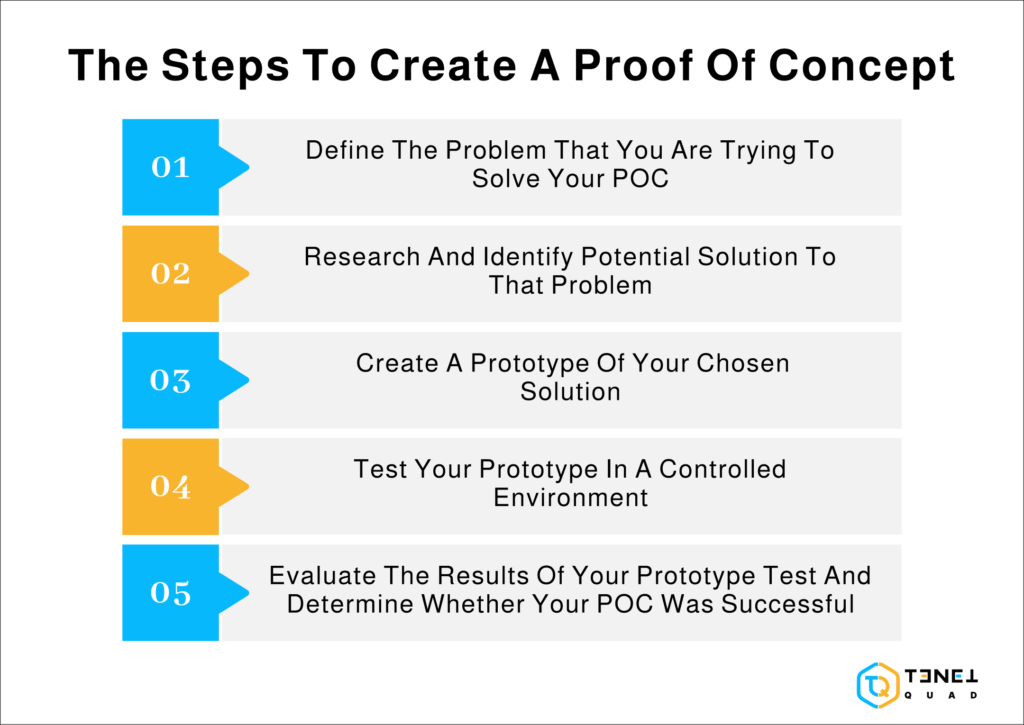
1. Define the Problem That You are Trying to Solve Your POC
Before starting any software project, you need to know exactly what problem you’re solving. Otherwise, you might create something that doesn’t fix the real issue.
For a POC, keep the focus small. Trying to solve too many problems at once can make things complicated. So, be clear about the problem before you begin.
Ask yourself:
- What is causing this problem?
- What are its effects?
- What possible solutions exist?
A well-defined problem helps you create a better POC that directly addresses it. If your POC works, you can build on it to develop a complete solution.
2. Research and Identify Potential Solution to That Problem
Companies often struggle with building a proof of concept (POC) for software projects. By researching and finding the best solution for your needs, you can create a POC that gives useful insights and feedback.
Good insights are key to making a POC that is practical and helpful. They may be hard to find, but they can be the difference between success and failure.
There are many things to consider when developing a POC, so take the time to understand them. The insights you gain will be valuable, making the effort worthwhile.
3. Create a Prototype of Your Chosen Solution
A prototype is a basic model of your idea that helps you test assumptions and get feedback from users. Creating a prototype early in the process allows you to refine your idea before spending too much time or money.
There are different ways to make a prototype:
- Simple projects can use paper, sticky notes, or cutouts.
- More complex projects may need digital tools like Adobe XD or Figma.
Once your prototype is ready, test it with users to gather feedback. This will help you improve your solution before full development.
4. Test Your Prototype in a Controlled Environment
Before launching your software, you need to test it in a controlled setting to find and fix any issues before users encounter them.
Here are three ways to do this:
- Alpha Testing – You or your team test the software yourselves to find bugs.
- Beta Testing – You hire testers or let a small group try the software and give feedback.
- Release Candidate Testing – You release it to a limited audience to see how they use it before the full launch.
No matter which method you choose, testing your prototype first ensures your software is ready for a successful public release.
5. Evaluate the Results of Your Prototype Test and Determine Whether Your POC Was Successful
Once you finish testing your prototype, review the results to see if your POC was successful. Look at the success criteria you set at the start.
Ask yourself:
- Did you reach your goals? If not, why?
- Did the POC prove your idea could work?
- Was this the right approach, or would another method have worked better?
- What lessons can you use for future projects?
Based on this, you can decide if your POC was a success and if it’s worth developing further.
Proof of Concept Examples
A proof of concept (POC) is a small test that shows if an idea can work, usually in a controlled setting. A good POC should prove that the idea can be used in real life and expanded on a larger scale.
Here are some examples:
- Wedding Planning App: A test version of an app that helps guests choose food and drinks based on their budget and preferences.
- Apartment-Finding Website: A site where users enter a location and search radius, then see matching apartments.
- Customer Service Improvement: A company tests a new phone system with customers to see if it improves service.
Conclusion
This guide will help you build a proof of concept for your software project. By following these simple steps, you can create a prototype to test your idea and gather feedback from users.
So why wait? Start today and see if your project has what it takes to succeed!

